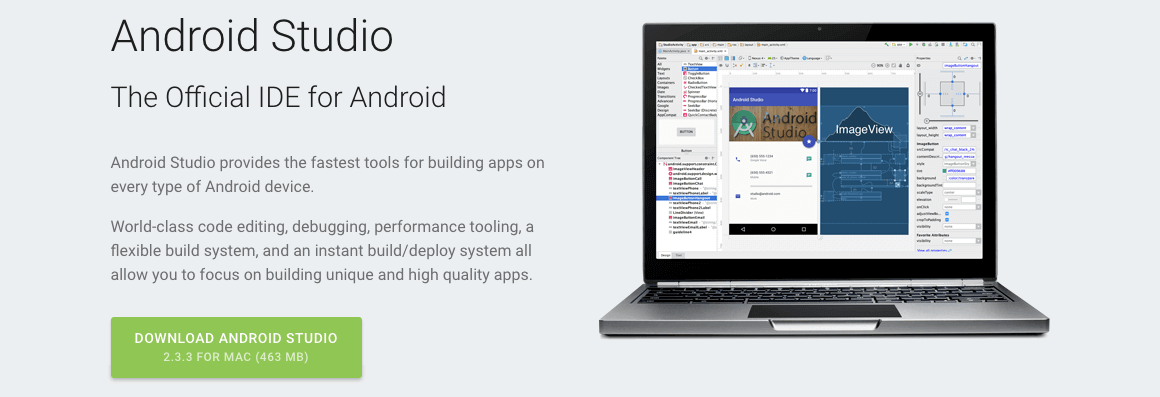7 Essential Skills for Mastering Android App Development
1 – Java Programming
Java is one of the most popular programming languages and ranked number one by many surveys. It is being taught in many schools and universities and partly due to this, has a large user base. This is why it was chosen as a preferred language for Android App Development.
You must know Java in order to be able to develop Android apps. This is a definite must. Java is an Object Oriented Programming language and you need to learn of OOP fundamentals such as Object, Class, Inheritance and Message Passing as well.
2 – Kotlin Programming
Kotlin is an open source programming language developed by JetBrains as early as 2010. and its first official version was released in February 2016 and it targets the JVM (Java Virtual Machine) and Android. You can find the source code of the language on Github.
Kotlin is both object oriented and functional.
It is more concise in comparison to Java and so Android developers that are used to developing their apps with Java, will be surprised by the fewer lines of code they have to write to perform the same functionality.
Kotlin is thoroughly compatible with the JVM and thus you can have Java and Kotlin code in the same Android project.
You will find Kotlin tutorials, books and more resources here.
3 – Knowing XML
Android GUI elements are dialysed using XML, which stands for Extensible Markup Language.
Its tags are user defined, which is why it was a good choice for Android.
w3schools.com is a great website for learning how to work with XML files.
4 – Android Fundamentals
Android applications are collection of reusable components of various types, which you must familiarise yourself with.
These include:
Activities
Each activity in Android represents a single screen with which the user can interact. For example an app might have a login activity. Once they have logged into the applicaiton, they will be taken to another activity, which may for example display a table containing the list of products and services.
Activities facilitate the flow of the application. The user interface of the activity is designed using XML files. More on this later.
Services
Android application services run in the background and can be used to perform operations that run for longer periods of time or to perform remote tasks. A typical example that is used in Android courses, is the implementation of a music player that runs in the background while the user interacts with various screens. A service can be triggered by an activity and the user may not know about it so it is good for performing background tasks.
Content Providers
Content providers allow data to be shared between different applications.
Content providers are great for the reading and writing of data that is not shared. They extend the ContentProvider class and must implement the required interfaces to function.
Broadcast Receivers
Android Broadcast receivers listen for system specific broadcast announcements such as low battery or an incoming call. These events can also be delivered to apps that are not running. These announcements are not limited to the Android device. They can also be triggered by the app, for example once data has been fetched from an API. Generally Broadcast receivers are meant to serve as a gateway and thus perform minimalistic jobs and functions.
5 – Working with Android Studio
Android Studio is the preferred IDE for Android Mobile Application Development. It was officially launched in 2014 and is an integrated development environment for developing Android apps.
Android studio can be downloaded here.
There are many youtube videos created by developers which can be used to master some of the aspects of the app development process.
6 – Interacting with APIs
Many Android applications interact with other services. These may be third party services or a private web service developed for the app. In either case, you need to learn how to interact with these services through the API. This may sound daunting and hard at first, but once you learn it, it is actually very easy. The way it works is that you have an API and a set of rules on hoe to query and fetch data from the service. But remember that each API is different so you must read the relevant documentation to be able to interact with the web service.
7 – Material Design
Google introduced Material Design three years ago to provide interface standards and guidelines that can be applied to all their products. Although not mandatory, the use of these guidelines is recommended. You can learn more about Material Design by reading the guidelines so you can apply the fundamentals to develop consistent, great looking and usable Android apps across devices.
You can pick the right layout and navigations and style your app in line with your brand.
More Information
There are tons of learning resources online which you can use to learn coding and app development. You need to be patient and keep practicing. Your first point of reference should always be the official Android developer website where you can find everything there is to know about Android design, development and distribution. Otherwise there are also many short tutorials on youtube which you can watch in your own time and implement. If you prefer to have a structured course, then you may want to attend one of our Android courses where you will be guided every step of the way. Alternatively, for an intensive Android app development learning experience, we recommend our App Development Bootcamps.
For more information, please send an email to info@bermotech.com



